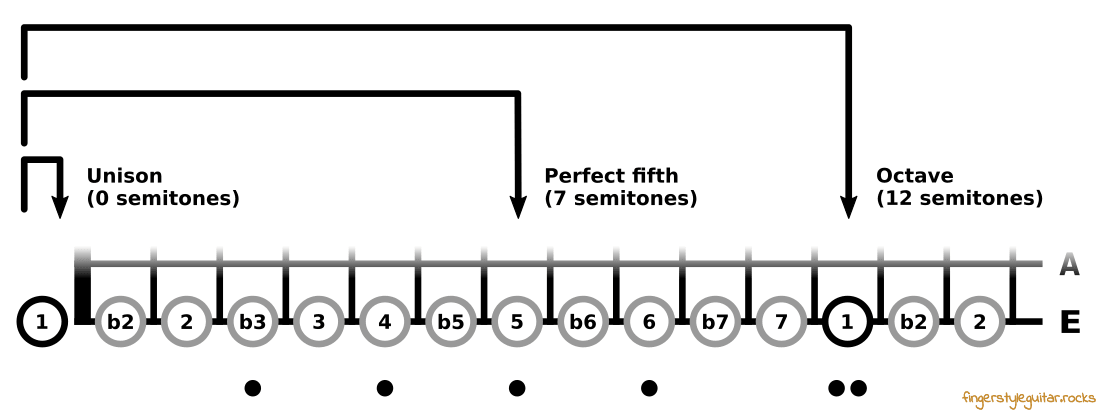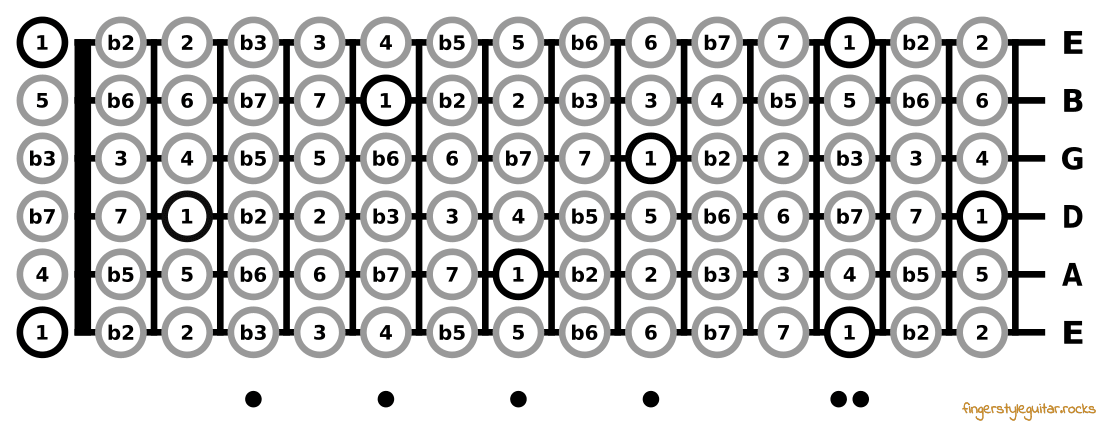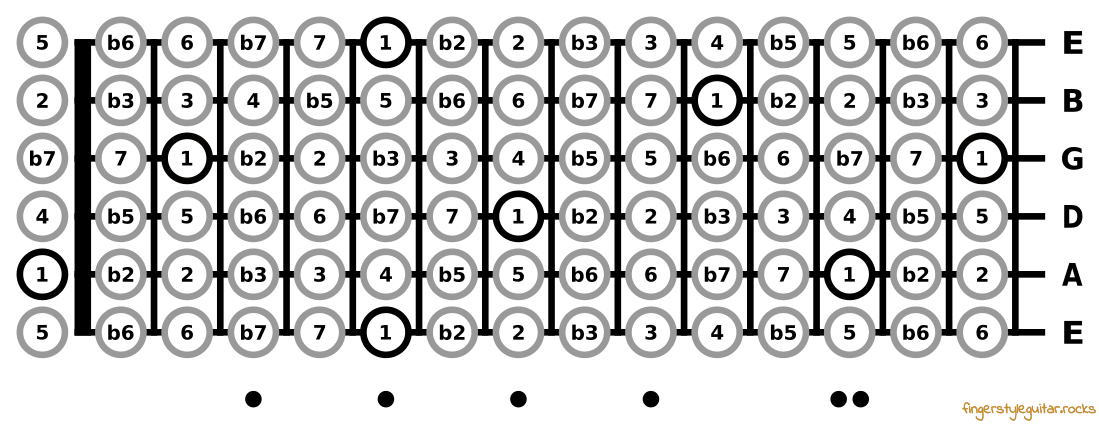Introduction to intervals
Intervals are the basis for scales and chords, so it makes sense to take a closer look at them.
An interval is the distance between a root note and a second note sounding simultaneously or one after the other. Each interval has its own sound characteristics, ranging from happy (e.g. major third) to sad (e.g. minor third), from perfect consonance (e.g. octave) to sharp dissonance (e.g. minor second).
Table of contents
Intervals on the guitar fretboard
On the guitar, the distance between two frets is a semitone. After twelve semitones, you are back at the root note, but an octave higher. Each combination of the root note with another note from the mentioned range is a separate interval. For example, if you play the root note twice, you get a unison. If you play the root note and then the note 7 semitones above, you get a perfect fifth.

Of course, this does not only apply to one string. Below are the intervals starting from the root note E across all strings.

Keep in mind that intervals are always relative to the root note. If you start from a different root note, the interval pattern will shift accordingly. Below are the intervals starting from the root note A across all strings.

List of intervals
| Semitone steps | Interval | Short name | Scale degree | Sound quality |
|---|---|---|---|---|
| 0 | Unison | P1 | 1 | Perfect consonance |
| 1 | Minor second | m2 | b2 | Sharp dissonance |
| 2 | Major second | M2 | 2 | Dissonance |
| 3 | Minor third | m3 | b3 | Consonance |
| 4 | Major third | M3 | 3 | Consonance |
| 5 | Perfect fourth | P4 | 4 | Perfect consonance |
| 6 | Tritone (augmented fourth / diminished fifth) | A4 / d5 | b5 | Sharp dissonance |
| 7 | Perfect fifth | P5 | 5 | Perfect consonance |
| 8 | Minor sixth | m6 | b6 | Consonance |
| 9 | Major sixth | M6 | 6 | Consonance |
| 10 | Minor seventh | m7 | b7 | Dissonance |
| 11 | Major seventh | M7 | 7 | Sharp dissonance |
| 12 | Octave | P8 | 1 | Perfect consonance |
| 13 | Minor ninth | m9 | b2 | Sharp dissonance |
| 14 | Major ninth | M9 | 2 | Dissonance |
| 15 | Minor tenth | m10 | b3 | Consonance |
| 16 | Major tenth | M10 | 3 | Consonance |
| 17 | ... | ... | ... | ... |
The table could be continued, but it's not necessary, because the intervals and their sound quality repeat after each octave. For example, a major tenth is a major third plus an octave. The name major tenth is new, but both intervals have the same sound characteristics.
A note on intervals and scale degrees: I use the terms interchangeably because the difference does not really matter at this point.
See also
To see intervals in action, please have a look at:

